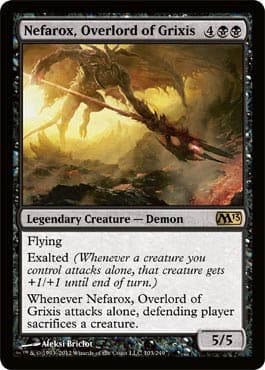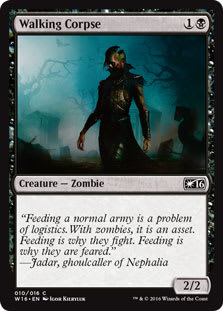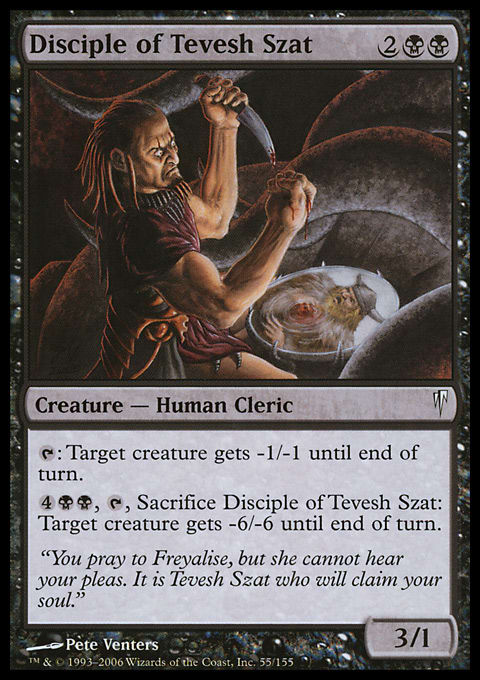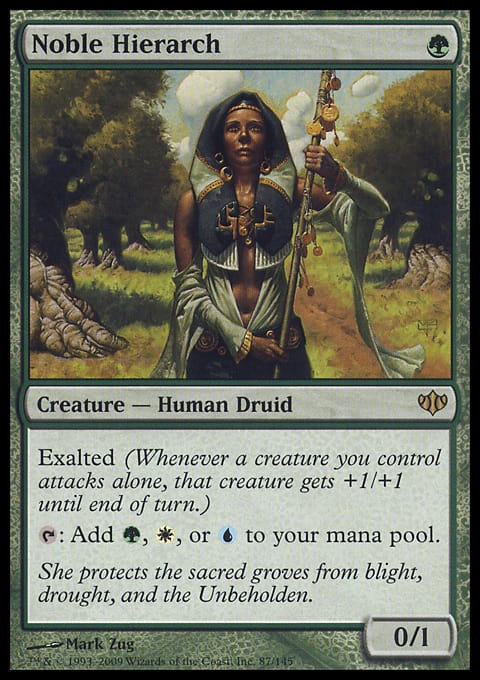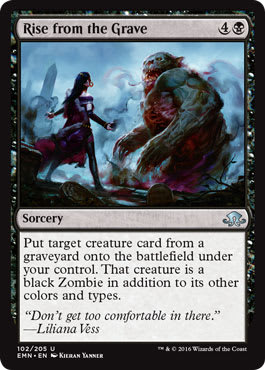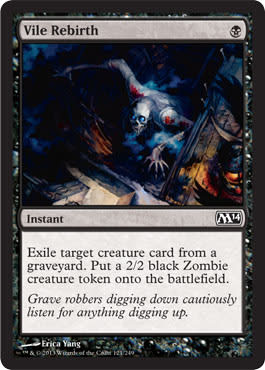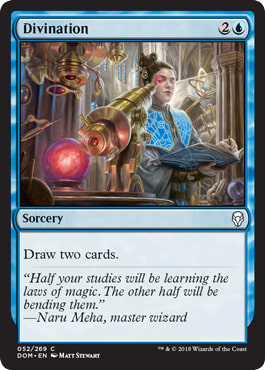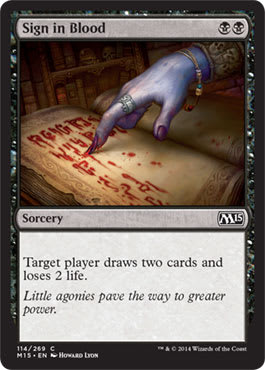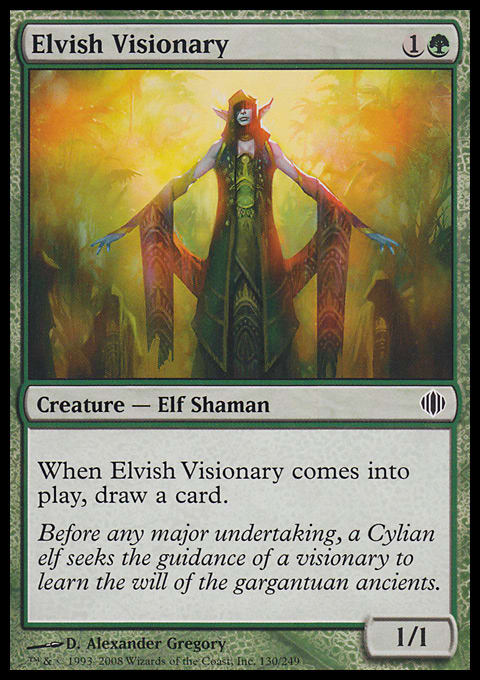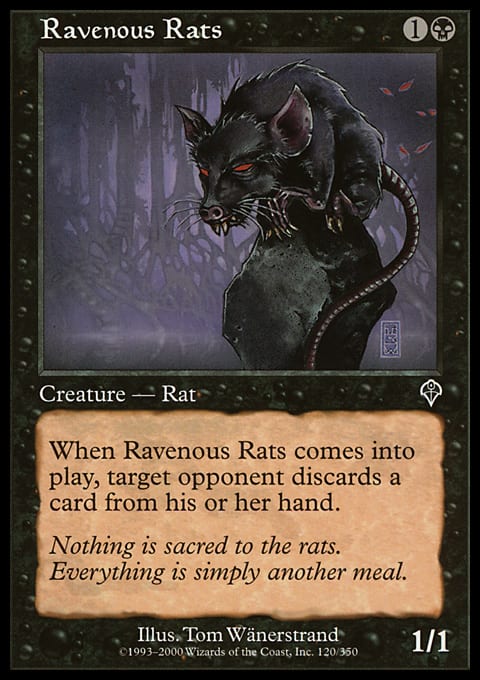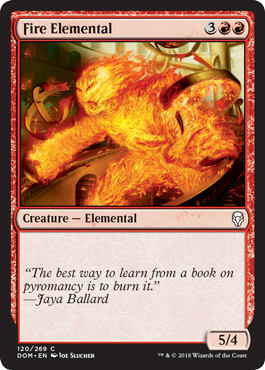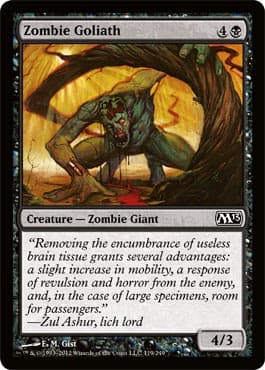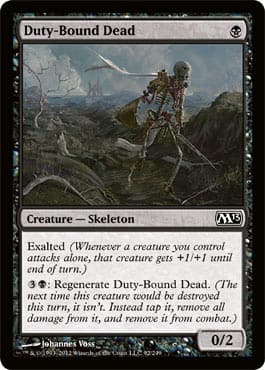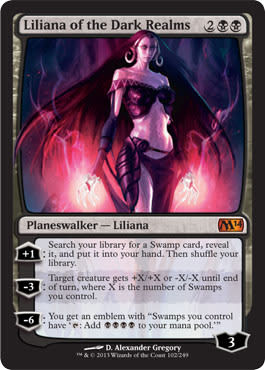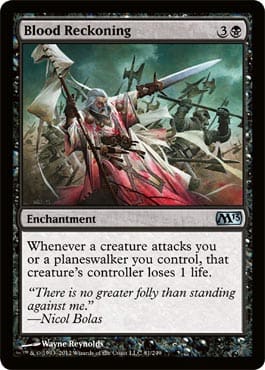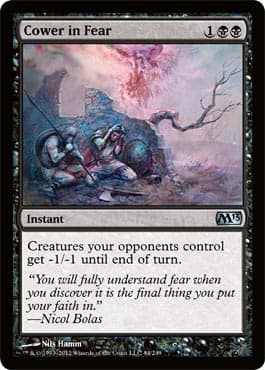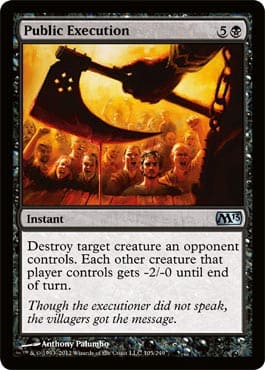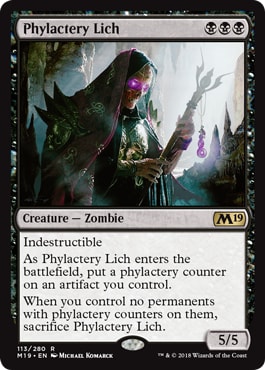This week, we’re delving into the choices that the Magic 2013 design and development teams made in constructing the set. If you’re just now joining us, make sure to check out the white and blue sections from earlier. With that out of the way, I’d like to take a moment to touch upon the biggest thing going on with black in this core set.
Who Exalts the Exalted?
Servant of Nefarox caused quite a stir when it was first spoiled in a Duels of the Planeswalkers screenshot—and with good reason. Exalted was Bant’s mechanic back in Shards of Alara; it stood for a place defined by its lack of black and red mana. How then can that same mechanic that encompassed Bant so well be at home in black?
The first piece of our answer is that exalted isn’t being used in quite the same way here as in Shards. Normally, core sets aren’t allowed to evolve the mechanics they bring back, but it seems that an exception was made for Nefarox.
This trigger’s a bit different than the one on Rafiq of the Many and . . . the many. And fittingly so; black’s exalted isn’t about choosing a champion and supporting him or her in a war effort à la Celtic mythology. It’s about taking power from one’s dark supplicants. That said, the actual supplication doesn’t really fit black, but it’s not an isolated problem.
Black’s philosophy is all about ambition. Its creatures aren’t helping you due to some sense of loyalty or devotion to a shared cause. They’re helping you because it’s a way to gain the power they desire. Well, except for these guys:
The problem is that every color wants to show both its leaders and its followers, but philosophically, no black creature wants to be a follower. I don’t really see a good solution, and as long as you’re leaving the minions of darkness in black, exalted seems like a fine fit.
And with that, I have just one more thing to say about exalted, and then I’ll move on. More specifically, it’s about this card:
A lot of people were expecting the above Modern staple to make a cameo in the core set; others weren’t so sure. Hierarch doesn’t exactly make sense in a core set. White and blue aren’t even green’s ally colors, but according to MaRo, that doesn’t seem to have been the main concern. The Magic 2013 design team was going for a religious feel with exalted, and bleeding the mechanic out of white and black didn’t contribute to that.
Those are valid points, but I still would have included Noble Hierarch in the design handoff. The first and most obvious reason to do so is that Modern won’t be accessible to the masses until its numerous expensive staples are reprinted, and this is probably the last product that will include the exalted keyword for quite some time. No, Hierarch doesn’t fit perfectly in Magic 2013, but it would have fit a lot better here than wherever else it might show up, and it certainly would fit better than Nantuko Shade did in Magic 2011. Furthermore, for all its depth in Limited and balance for Constructed, Magic 2013 seems to have left much of the competitive crowd nonplussed. Another reprint that people know to be powerful certainly would have helped to alleviate the problem.
That said, I have no problem with Noble Hierarch being left out. It’s not only possible, but also likely, that it would have been too strong alongside Geist of Saint Traft in Standard, but I wish that had been left for development to sort out instead of having no attempt made to include it.
Picking at the Bones
Anyway, that’s quite enough time spent ranting about a green card in what is allegedly a review of black. Let’s get to the Draft archetypes!
Double the Dimir
Last week, we talked about U/B aggression, but what other goodies do the set’s developers have in store for us?
Cards like these seem to take particular advantage of a mill strategy, but I remain unconvinced that the upside actually outweighs the benefits of white’s superior defensive lineup. U/B does have another viable strategy, but I’m not sure how often a table will be able to support multiple members of the guild—the control deck is even hungrier for Giant Scorpions than the exalted version. That said, if a U/B drafter can mount an adequate defense, he should have absolutely no problem grinding his opponents out of the game.
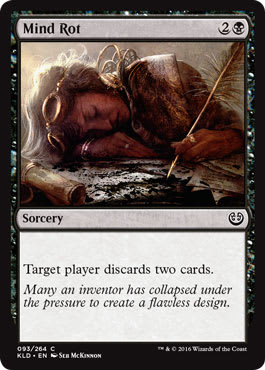 |
This theoretical drafter even has access to Harbor Serpent to clean things up if no uncommon or rare bombs are available. Drafters will lament how making this deck work requires picking Kraken Hatchlings and Fog Banks extremely early, but that requirement will help keep the Draft format fresh. Not only do you see different gameplay from different archetypes, but when the tools they require appear in unusual proportions, you even get to have surprises in the drafting portion!
Golgari
I’ve been waiting to talk about this one for quite a while. Both colors are filled with utility creatures that leave small bodies around, perfect for sacrificing to a hungry Bloodthrone Vampire . . . or abusing with Roaring Primadox.
Then again, Primadoxes ought to be hard to track down. Luckily, Rancors and Kitesails do a passable job of making 1/1s good, and at the very least, their chump-blocking capabilities should buy you time to start dropping Vastwood Gorgers and the like. In fact, Liliana's Shade makes casting these big beasties significantly easier in this particular color combination. Expect to get ahead on cards and catch up on the board later.
Rakdos
In most Limited environments, B/R decks fall into a control role because there’s a ton of removal and very few passable creatures, and while Magic 2013 offers more reasonable bodies than normal, the all-removal deck is still certainly an option. Hill Giants generally make or break this sort of deck because all the Murders in the world do you no good if you have to use them on the Walking Corpses that none of your creatures outclass. Luckily for the prospective removal.dek drafter, the developers have included some beef, so in addition to the ever-present Canyon Minotaur, you get these:
Heck, with a bunch of extra mana, Liliana's Shade can dominate the board in the same way, and the Giant Scorpion/Wall of Fire combination means that even a little Dragon Hatchling is often going to be enough to take over.
Orzhov
W/B’s major archetypes aren’t as clearly delineated during drafting as most of the other color pairs’ because both decks rely heavily on the combination’s bevy of exalted cards.
The basic idea is that you can maximize the mechanic in two different ways—either by cluttering the ground and making your lone attacker big enough to move in anyway or by racing with a creature your opponent can’t profitably trade for. Steve Sadin covered all the details last Wednesday, so I won’t belabor the point, but I will recommend that you read his excellent article on the subject.
Demonic Overlords
And with that, all that’s left is to talk about a few particularly interesting cards. First up, we have the lady of the hour:
We’ve seen this trick before on Garruk, Primal Hunter: a highly desirable minus ability that you want to wait a turn on so that you can keep your ’walker. There’s certainly some good gameplay here, but it’s not something I’m comfortable putting on very many planeswalkers—the whole point of the card type is that you get your ally to help you out. If you just want one spell, wouldn’t it be simpler to cast it for yourself? Or rather, in gameplay terms, shouldn’t casting a planeswalker actually feel like working on a team?
All that said, I’m okay with the numbers here since this planeswalker—which many have maligned as weak—is just on the edge of being Jace, the Mind Sculptor. She has four abilities (don’t be fooled by the fact that two were combined into a modal template), she generates card advantage without losing loyalty, and she can protect herself. So, what keeps her from being “Jace 2.0” 2.0? A lot of people think it’s her weak ultimate, but that’s not really the defining factor in power level. Otherwise, Sarkhan Vol would have been as good as everyone thought he would be. The thing keeping Liliana off the top of the heap is that she can’t actually protect herself. She’s gone once she’s removed the threat.
Understanding that development piece, I’d be interested to know if they tried any other numbers on the ultimate. The Lake of the Dead reference is nice, but adding more mana has almost zero impact on the card’s power level, so if an extra mana symbol would have excited anyone, I’d have gone for it.
I’m honestly a little bit surprised that this card was printed as is. The effect is pretty griefy, and new players have enough trouble committing to an attack as it is. I get it—yes, this is a cute way to push people toward exalted. I’m also aware that some portion of the audience loves these effects. But they just saw Descent into Madness, so if this ability does indeed contribute to the environment, I’d still prefer it at 5 mana. There, it would make less sense to play it in normal Limited decks, and it would thus would show up in fewer games.
Both of these cards are cool, and I don’t have a particular problem with either. I’m just not convinced that one color needs quite so many huge combat blowouts. Between Blood Reckoning and these two, I’d imagine that black’s punishing multi-creature attacks too much, but I guess I’ll play some more games before condemning the decision outright. On that note: playtest your designs. A lot. It’s the only way you’ll ever know what’s really going on.
This card’s pretty wordy, but it makes for a good Gorgon. I came up with a similar ability working on a Greek-mythos-inspired set, but in the Goblin Artisans M13, we ended up using a Gorgon that turned the player into stone because it was a cleaner card. Streamlined designs are good, but so is resonance, and when you can’t have both, I think this option makes more sense on a flavor-driven rare.
I absolutely love the way this card plays. First, it’s a 0/2 regenerator that’s at its best in hyper-aggressive decks. On top of that, playable 1-drops give the first turn purpose beyond being a roundabout way to get land number one onto the table. The regeneration is cool because it kicks in so late and takes up so much mana that it has to be used for racing, but the best part is the card’s stats. When I first looked at Duty-Bound Dead, it all seemed a bit arbitrary. That is, in most Limited formats, 0/1s and 0/2s are the same things: chump-blockers. But Magic 2013 has an unusual abundance of playable 1-power creatures between Ravenous Rats, guys who want exalted boosts, and the opposing token swarms. That puts Duty-Bound Dead in a rare niche where it doesn’t have board presence but the fact that it can block isn’t irrelevant. Once again, my hat’s off to the folks in Renton.
I don’t have a whole lot that’s new or insightful to say about this design, but I’m glad that it’s back. When the Lich first appeared in Magic 2011, I pegged it as a lead-in to the coming Scars of Mirrodin block, and its disappearance the following year seemed to confirm my suspicions. That would have been a shame since the card is both resonant and creates exciting gameplay.
Turning the Town Red
Black’s a little bit wonky this time around because it’s pushing both the exalted and basic-land-types-matter themes, but ultimately, that’s preferable to under-supporting them. Still, going forward, things will be a little bit more normal. Speaking of which, if I can make the time, you may find the red installment of this review later in the week, but either, way I’ll see you back here next Monday.













